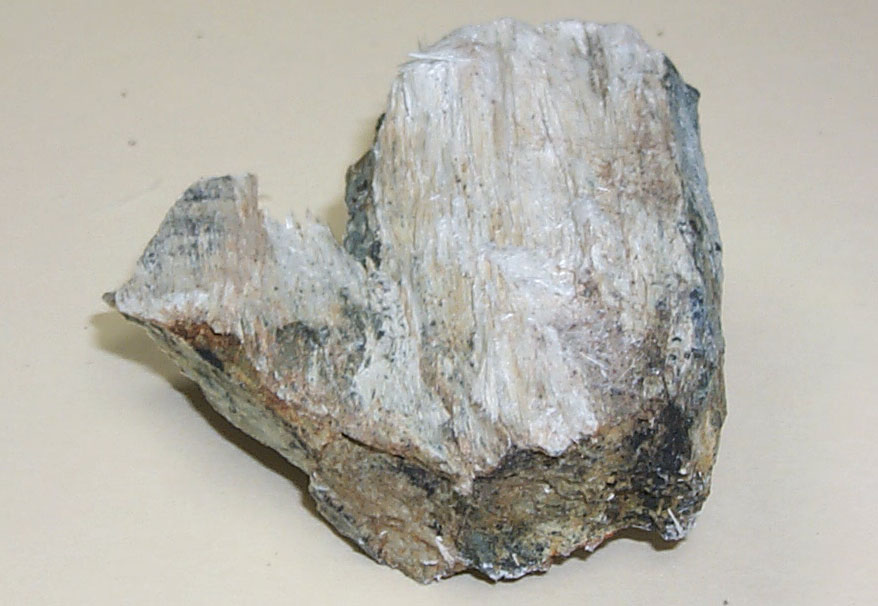About Asbestos
 Tremolite-asbestos specimen from California. Tremolite is a hydrous calcium magnesium silicate that can occur in a variety of crystal shapes and sometimes occurs as asbestiform fibers.
Tremolite-asbestos specimen from California. Tremolite is a hydrous calcium magnesium silicate that can occur in a variety of crystal shapes and sometimes occurs as asbestiform fibers.
Asbestos is a term used for a group of silicate minerals that occur as asbestiform fibers having high tensile strength, flexibility, and heat and chemical resistance. Asbestos is a known carcinogen and inhalation of asbestos may result in the development of lung cancer or mesothelioma. The asbestos contents of many manufactured products have been regulated in the U.S. for a number of years.
Chrysotile and amphibole asbestos (such as tremolite in the adjacent photo) occur naturally in certain geologic settings in California, most commonly in association with ultramafic rocks and along associated faults.
The California Geological Survey provides information on the geology of asbestos occurrences in California, and has developed guidelines to assist geologists conducting investigations related to naturally-occurring asbestos.
Our Role in Asbestos Research
Examples of CGS asbestos hazards projects include:
- Development of a generalized map of areas more likely to contain asbestos in California, linked below (MS 59).
- Undertaking a pilot mapping project to produce a map of areas more likely to contain asbestos for El Dorado, Placer, and Sacramento Counties, linked below.
Asbestos-Related Publications
Map Sheet 59: Reported Historic Asbestos Mines, Historic Asbestos Prospects, and other Natural Occurrences of Asbestos in California, 2011
El Dorado County
-
Open File Report 2000-02: Areas More Likely to Contain Natural Occurrences of Asbestos in Western El Dorado County, California, 2000 (web page with links to download the report)
Placer County
-
Special Report 190: Relative Likelihood for the Presence of Naturally Occurring Asbestos in Placer County, California (web page with a link to download the report)
Sacramento County
-
Special Report 192: Relative Likelihood for the Presence of Naturally Occurring Asbestos in Eastern Sacramento County, California (web page with a link to download the report)
Guidelines and Other
-
Special Publication 124: Guidelines for Geologic Investigations of Naturally Occurring Asbestos in California (PDF, 1 MB).
-
Special Report 189: Preliminary Report on Using Imaging Spectroscopy to Map Ultramafic Rocks, Serpentinites, and Tremolite-Actinolite-Bearing Rocks in California (web page)
-
Open-File Report 2000-19: A General Location Guide for Ultramafic Rocks in California - Areas More Likely to Contain Naturally Occurring Asbestos, 2000, Map scale 1:1,100,000 (PDF, 2 MB).
Web page by:
California Geological Survey - Mineral Resources Program
